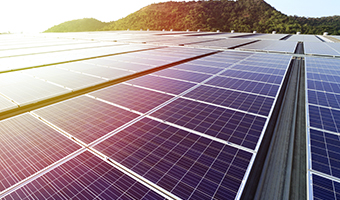Harnessing solar energy through a partnership approach
The built environment is the sum of many parts, often working in isolation, but if developers, landlords and tenants work together, the likelihood of achieving sustainability is enhanced.
Collaboration in action
December 2019 saw the completion of a solar PV project that had been over a year in the making. The project involved the installation of a PV system on the roof of a retail warehouse unit in Croydon. The project was funded by the landlord, but the system was installed within the tenant’s demise. The success of this project demonstrates the requirement for, and benefit of, landlords and tenants collaborating on the issue of sustainability.
The 35,741 sq ft retail warehouse is owned by landlord Nuveen Real Estate and occupied on a full repairing and insuring (FRI) lease. Nuveen has set itself ambitious sustainability targets, including signing up to the BBP’s Climate Change Commitment to deliver a net zero carbon portfolio by 2050. Nuveen funded the installation of the PV system on the roof of the property and will sell back the energy to the tenant at a discount to market rate.
In total, a PV system of 210 kWp – the measure used to indicate the size of a system – was installed. This system will save 52 tonnes of carbon emissions in the first year, which is projected to total 653 tonnes over 25 years. By selling energy to the tenant, Nuveen will recuperate the costs of installing the system in an estimated 13.2 years, after which time the company will generate profit.
Win-win scenario
The benefits of installing a PV system are bountiful. Not only is the landlord able to take greater steps toward its sustainability goals and foster deeper engagement with the tenant, it is also securing a future source of income.
Additionally, the tenant is also able to make strides towards its sustainability goals by accessing on-site renewable energy and reducing overall energy costs.
This project is an interesting example of how landlords can help to improve the sustainability of an FRI property. Typically during the lease term the landlord has little means to improve the sustainable operation of the property, as the property is under the tenant’s control. However this project has shown how, by proactively engaging on the issue, both parties can benefit.
LSH is now looking to replicate this project with other tenants, especially those in the industrial sector. Warehousing lends itself extremely well to PV projects, due to the large roofs.
Get in touch with the team at LSH if you’d like to learn more.
REGISTER FOR UPDATES
Get the latest insight, event invites and commercial properties by email







